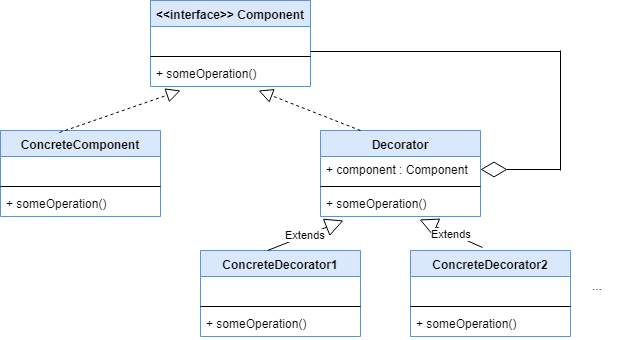When to Use the Decorator Pattern: Key Insights

The Decorator Pattern is a flexible design pattern in object-oriented programming that allows you to add behavior or state to individual objects without affecting the behavior or state of other objects from the same class. This pattern can be particularly useful in software development for creating systems that are both extensible and maintainable. Here, we delve into when to use the Decorator Pattern, exploring its benefits, practical applications, and potential drawbacks.
Understanding the Decorator Pattern

Before we dive into when to use it, let’s understand what the Decorator Pattern entails:
- Inheritance vs. Aggregation: Instead of using inheritance to extend the functionality of a class, the Decorator Pattern uses object composition. This means that the behavior of an object is extended at runtime by wrapping it with decorator objects.
- Encapsulate Behavior: Each decorator adds a single responsibility or behavior to the component it wraps, promoting single responsibility principle (SRP).
- Dynamic Behavior Addition: You can add new behaviors to objects dynamically, without altering their interfaces.
When to Use the Decorator Pattern

There are several scenarios where the Decorator Pattern can significantly enhance your software architecture:
1. Flexible Extension of Functionality

The Decorator Pattern is ideal when you need to extend the functionality of classes:
- When inheritance would lead to an explosion of subclasses.
- To add responsibilities to objects at runtime without affecting other objects from the same class.
- To adhere to the Open/Closed Principle (open for extension, closed for modification).
💡 Note: This pattern promotes flexibility by allowing you to mix and match behaviors without changing the core classes.
2. Composing Complex Objects from Simpler Ones

If your application needs to build complex objects from basic, simple objects, decorators can be used to:
- Layer on multiple functionalities without creating a new subclass for every combination.
- Compose objects that are independent of how other objects might use them.
3. Responsibility Management

When you want to split large classes into smaller, more manageable pieces or assign multiple, possibly optional, behaviors to an object:
- The pattern enables the distribution of responsibilities among different decorators, which can be combined or used separately.
4. Behavioral Enhancements

Use the Decorator Pattern when you need to add or modify behaviors in an object at runtime:
- To add state or behavior in a non-intrusive manner.
- When you want to allow clients to choose or modify these behaviors without altering the core object.
5. Logging, Caching, and Security

Enhancing classes with logging, caching, or security features without modifying their core logic:
- Logging requests or responses, caching results, or enforcing security constraints.
🛑 Note: Be cautious about the Decorator Pattern leading to overly complex object graphs if not managed properly.
Implementing the Decorator Pattern

To implement the Decorator Pattern:
- Create a component interface or abstract class that defines the methods to be used by clients.
- Develop concrete components implementing this interface.
- Create a Decorator abstract class that also implements this interface, taking a component reference in its constructor.
- Write concrete decorators that add specific responsibilities or behaviors.
Potential Drawbacks

While the Decorator Pattern offers many advantages, it’s important to consider:
- Complexity: Too many decorators can complicate the object structure and make debugging challenging.
- Performance Overhead: Decorators can introduce performance costs due to the additional levels of indirection.
- Tracking State: It can be tricky to track which decorator is active or in what order decorators are applied.
Conclusion

The Decorator Pattern provides a powerful tool for developers to extend functionality without bloating class hierarchies or modifying existing classes. It shines in scenarios where you need dynamic, flexible, and non-intrusive additions to object behavior. By understanding when to apply this pattern, developers can create more adaptable systems that comply with modern software design principles like SRP and Open/Closed Principle. However, like any tool, its effective use requires consideration of both its benefits and its potential to introduce complexity if not carefully managed.
How does the Decorator Pattern differ from inheritance?

+
The Decorator Pattern uses object composition to add responsibilities to individual objects, whereas inheritance extends classes, potentially leading to a complex hierarchy. Decorators allow dynamic addition of behaviors, while inheritance is static.
Can the Decorator Pattern be combined with other design patterns?

+
Yes, the Decorator Pattern often works well with patterns like Strategy, Command, and Composite. For example, decorators can dynamically alter the strategy used by an object or implement commands in a composite structure.
What are some common use cases for the Decorator Pattern?

+
It’s used for adding logging to business logic, wrapping objects to add new behavior like caching, securing components, or even adding graphical effects to UI elements in GUI programming.



